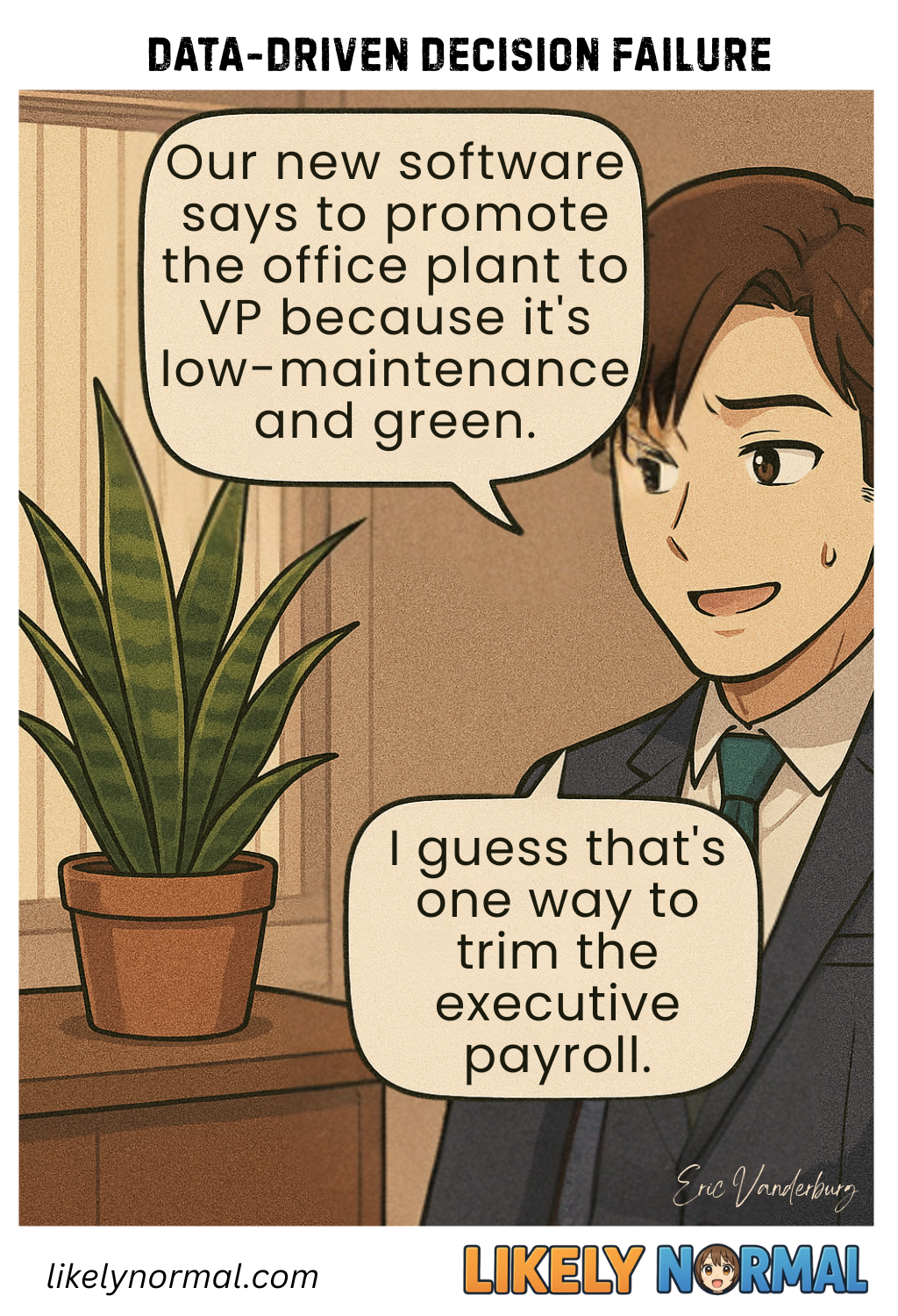Data-Driven Decision Failure
Enterprise software operates on a simple principle: take questionable data, run it through an algorithm that no one understands, and present the results with the confidence of a weatherman predicting sunshine during a hurricane. These systems don’t just make bad recommendations—they double down on them, like a GPS that insists you drive through a lake because historical traffic patterns show it’s theoretically faster.
Take the “automated procurement advisor” that, after analyzing years of spending data, proudly suggests buying 10,000 rolls of toilet paper because “consumption trends indicate impending shortage.” Never mind that the trend was just Tom from Accounting hoarding supplies during lockdown. Or the “AI-powered staffing optimizer” that schedules 30 people for the same shift because it spotted a productivity surge—which was actually just that one time the team stayed late for free pizza.
Then there’s the predictive analytics that swear they can forecast business outcomes. These systems will look at a single missed deadline and conclude the entire department should be outsourced, or detect a 0.2% dip in sales and recommend rebranding as a blockchain-based artisanal taco stand. The software’s confidence is unshakable, even when it’s clearly hallucinating—like the time it flagged the CEO’s name as “potential fraud risk” because he once expensed a guacamole upgrade.
The worst part is that someone has to defend these recommendations in meetings. Picture a sweating middle manager explaining to the board why the software insists on replacing all chairs with yoga balls because sedentary trends are negatively impacting agility. Meanwhile, employees are left to reconcile the fact that their performance review was written by a bot that thinks exceeds expectations means they once replied to an email within 30 seconds.

Discussion ¬